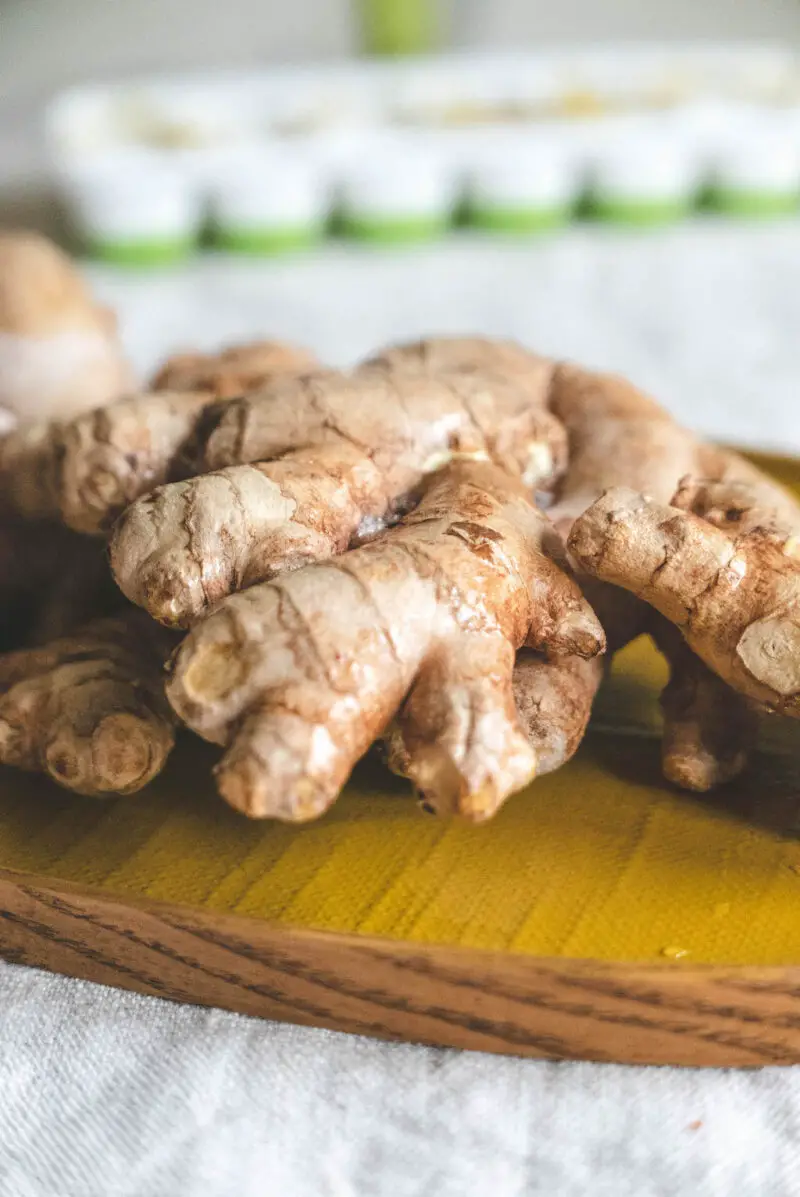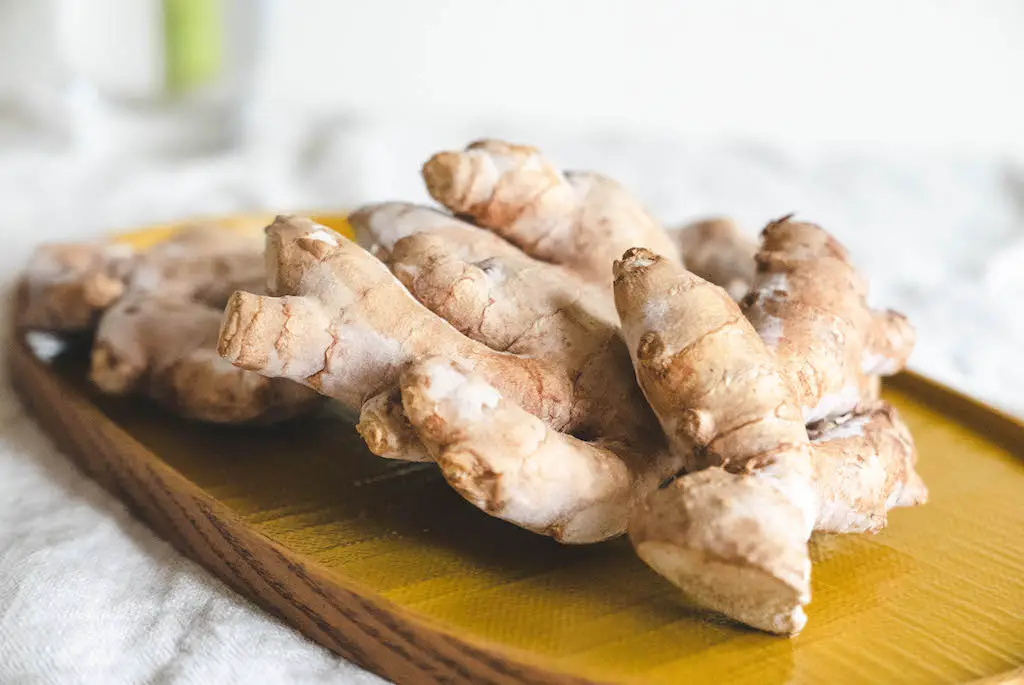This post may contain affiliate links. Please read my disclosure for details at the bottom of this page. As an Amazon Associate, I earn from qualifying purchases on this article about ginger in Korean cuisine (saenggang). I hope you enjoy learning about saenggang!
What Is Saenggang?
Ginger is a variety of flowering plants whose rhizome (the plant’s modified subterranean plant stem that sends out roots and shoots from its nodes) is commonly used as a spice. Colloquially, people refer to the rhizome as ginger or ginger root when cooking. In Korea, people refer to this widely-used root vegetable as ‘saenggang’ (생강).
Ginger is a member of the family Zingiberaceae. This family includes other commonly used spices such as turmeric and cardamom.
Historians believe ginger originated in Maritime Southeast Asia. It is commonly agreed upon that the Austronesian peoples domesticated this plant first. Then, in c. 5,000 BC, these spices were transported and traded during the Indo-Pacific Austronesian Expansion. At the time, it spread through Asia, reaching as far as modern-day Hawaii.
Later, ginger was exported from Asia. It entered the European market via the spice trade along with cloves, peppers, and other spices. The use of ginger in Europe dates back to ancient Greece and Rome.
Seanggang in Korean Cuisine:
Once again, people in Korea refer to this ginger as ‘saenggang’ (생강).
Most commonly, people in Korea use this root vegetable as a flavor ingredient in cooked dishes. Some examples of dishes include:
- Bulgogi (불고기): Literally meaning “fire meat”, this dish is made by marinating thin slices of meat (most commonly beef). Then, people grill the meat on a barbecue or on a stove-top griddle. At home, people often stir-fry it in a pan. People often use ginger as one of the marinade ingredients.
- Galbitang (갈비탕): In English, we can translate this to beef short rib soup. This Korean soup often uses ginger as an ingredient.
- Dwaeji Galbi Jjim (돼지갈비찜): Here, we can translate this as Korean braised pork ribs. Once again, people use ginger as an ingredient for this dish.
Beyond use in marinades, sauces, and other cooked dishes, people use this ingredient in tea! You can buy Korean ginger tea in jars with honey, in powdered dried form, or you can make it fresh yourself!
This is just a glimpse of ginger in Korean cuisine. Note that ginger is used in other famous dishes such as kimchi!

Ginger (Saenggang) Frequently Asked Questions:
Now that we learned about this Korean root vegetable, I want to also answer some questions you may have about it! If I do not answer your question, feel free to leave a comment in the section below or email me at [email protected].
What Does Ginger Taste Like?
Ginger has a naturally warm, pungent, and spicy flavor that has an unmistakable kick. That kick helps give any dish an invigorating aroma.
Where Can I Buy This Ingredient?
Excitingly, you can buy this ingredient at almost any Western or Asian grocery store! Further, you can also find this at farmers’ markets!
If you are looking for this ingredient, you should check in the refrigerated vegetable section of the store.
How Do I Properly Store Saenggang?
I recommend keeping your ginger root in an air-tight storage container or plastic bag. Then, store it in the refrigerator. In the refrigerator, ginger can keep for approximately a month, sometimes even longer.
If you begin to see greenish-blue spots of mold or the ginger gets soft and slimy, it’s time to toss it.
To keep ginger even longer, you can freeze it! You can freeze it as a whole ginger root, in slices, or minced into tiny pieces. Learn how in my article ‘Can You Freeze Ginger? How to Freeze Ginger’!
What Is a Good Ginger Root Substitute?
Unfortunately, there isn’t a really good substitute for ginger. Thankfully, if you cannot find fresh ginger, you can buy dried and ground varieties in the spice section.
I Hope You Enjoyed Learning About Ginger in Korean Cooking!
In the end, I hope you enjoyed learning about the uses of ginger in Korean cuisine. If so, let me know in the comment section!
If you would like to read more about cooking, you can find recipes as well as further Korean ingredient articles on my blog. I listed some of our favorite Carving A Journey recipes below! For reference, many recipes are influenced by my family’s blended Korean and Southern heritage.
Korean Ingredient Articles:
Further Carving A Journey Recipes:
If you have any questions or comments, you can also email me at [email protected]. And, finally, I would love to hear from you through our social media as well! You can follow me at @carvingajourney on Instagram, Facebook, and Pinterest. I also started a vlog Youtube channel with my husband! Or, if you would like more articles like these, you can subscribe to the blog by joining the mailing list. Let me know if you try cooking Korean food using ginger (saenggang)! Thank you so much for stopping by!
Carving A Journey is a participant in the Amazon Services LLC Associates Program, an affiliate advertising program designed to provide a means for sites to earn advertising fees by advertising and linking to Amazon.com. Although we may earn commissions for our endorsement, recommendation, testimonial, and/or link to any products or services from this website, these opinions are my own and I fully support these products.

